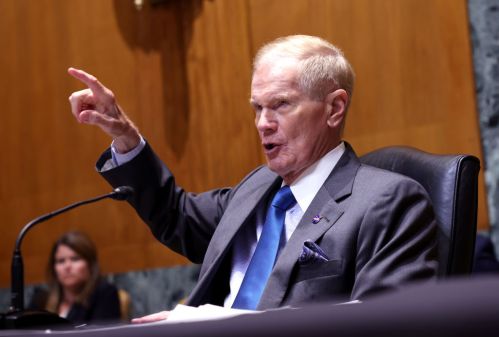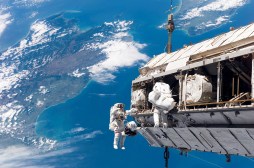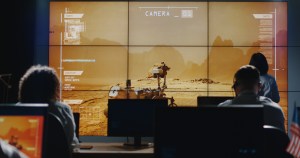Here’s how you can build tools for NASA’s ISS robot

The tools designed in the latest NASA challenge will be used by NASA’s R2 humanoid robot. (NASA)
NASA is once again looking to harness the power of the crowd for solutions that can help astronauts on the International Space Station.
NASA’s National Tournament Lab has partnered with freelance job board Freelancer.com, calling for people to create computer-aided design models of tools that will be used with R2, a humanoid robot aboard the ISS that astronauts use to carry out various repair and maintenance jobs. Astronauts will use the designs created by Freelancer.com’s community of more than16 million users, programming them for use with R2’s various capabilities, such as RFID Scanners, drills and scopemeters.
Different design contests will be unveiled over the next few weeks, and two are already live as of launch: a spacewalk handrail that R2 will grasp when working on the ISS’s outer portion and a manila envelope that will refine the robot’s dexterity.
Nik Badminton, Freelancer.com’s regional director for North America, said the effort with NASA is “a bit of a dream,” but one his platform’s community is capable of handling.
“I think we’ve got an incredible number of highly skilled designers on our platform,” Badminton said. “This is using the skills of people who do three-dimensional design every day. It’s got this amazing prestige and context to it now. Putting it in the hands of a robotic assistant on the International Space Station is pretty incredible, but these people are used to designing tools and models to be used in factories or business.”
Winners of each contest will be given a small cash prize (between $50 and $100), culminating in a much larger purse for a challenge that calls upon people to develop a smartwatch concept and application for ISS astronauts.
NASA has held a number of these crowdsourced challenges in the past year. Last October, the agency held its Future Engineers challenge, which called on K-12 students to design tools that will be 3-D printed aboard the station. At the South by Southwest Interactive conference this past March, NASA unveiled a software application that allows amateur space watchers to detect asteroids from their computers. That software was created out of NASA’s Asteroid Data Hunter, a challenge where NASA paired with TopCoder, a community of more than 630,000 developers, designers and scientists, to crowdsource better ways to detect asteroids.
Badminton, while excited about the cachet that NASA brings, is happy that the community seems to be approaching the challenge like any other opportunity.
“This is NASA using us as a practical platform to get work done rather than using it as a contest PR platform,” he said.






